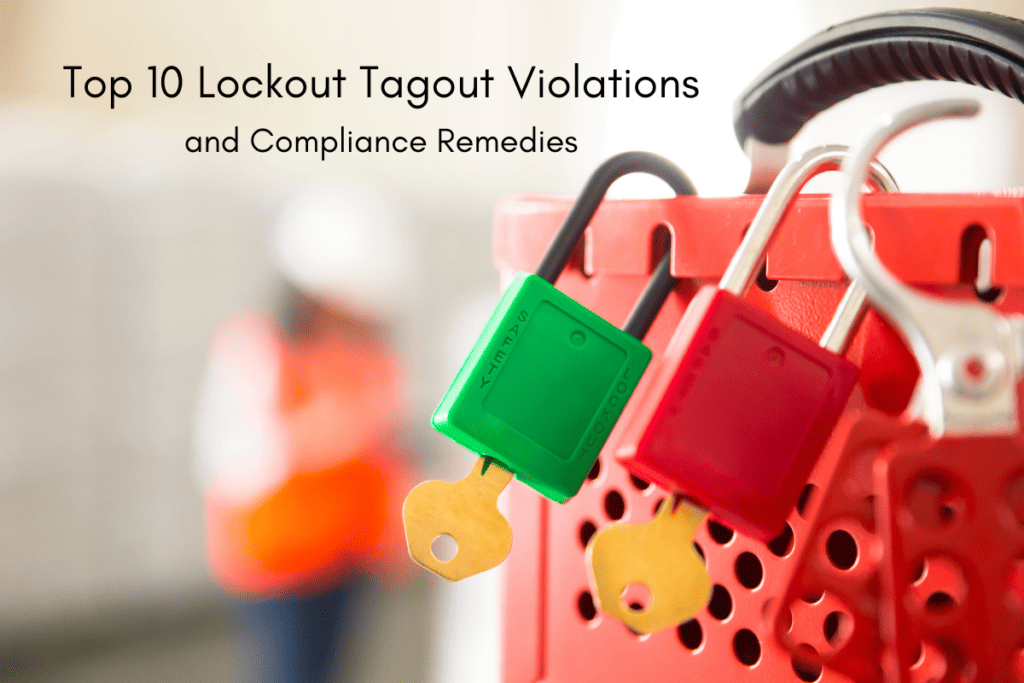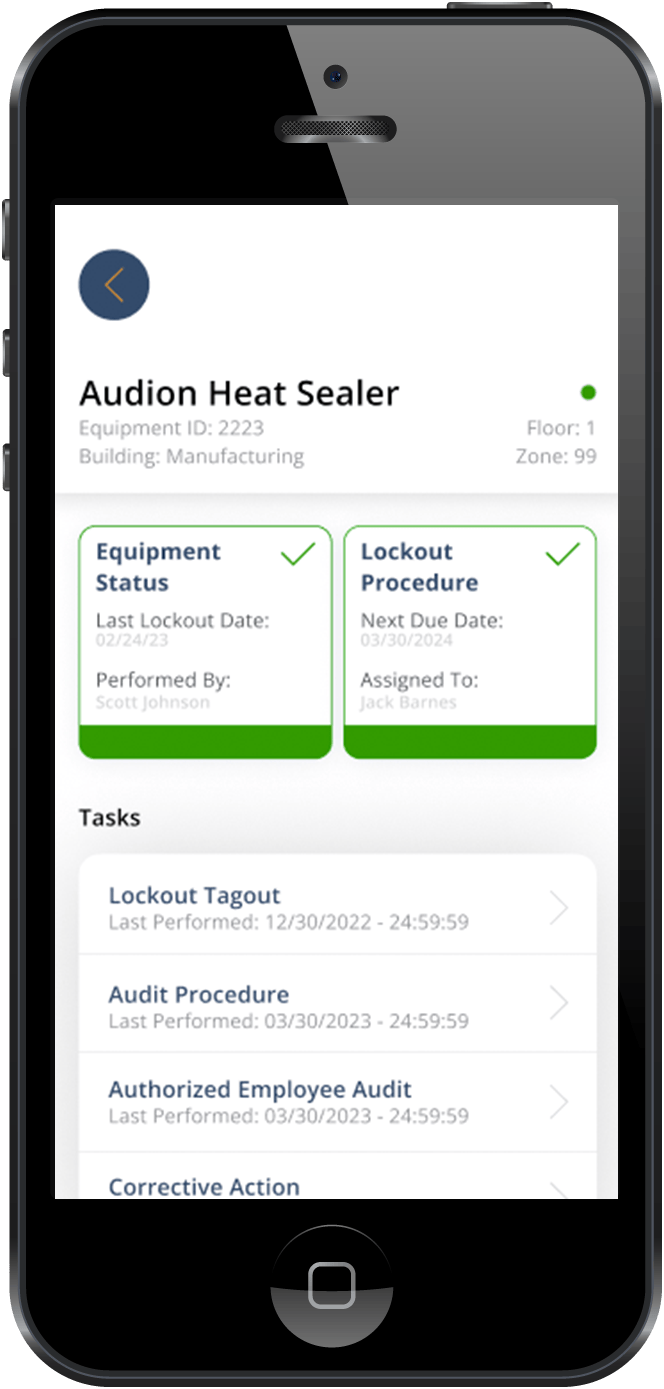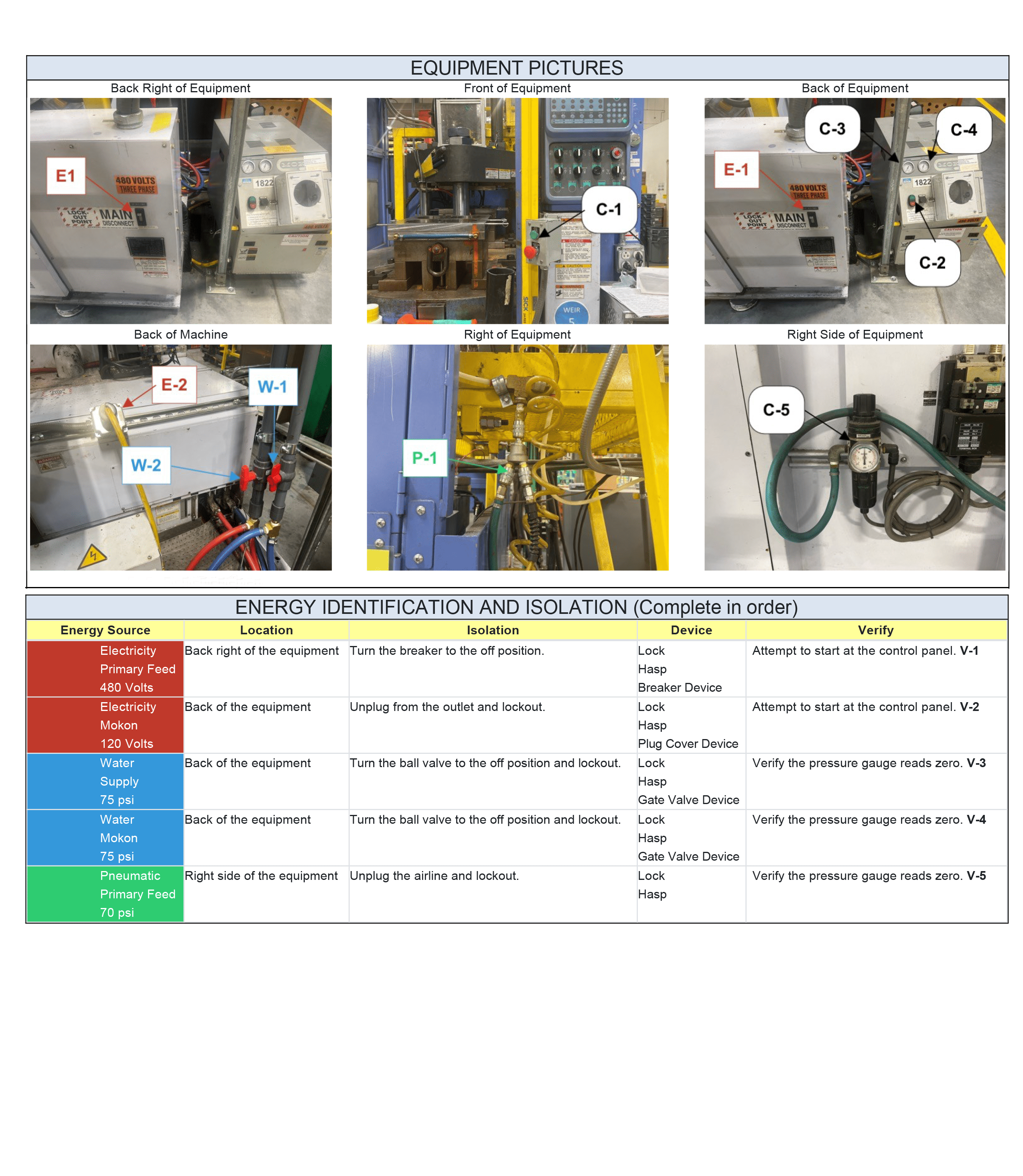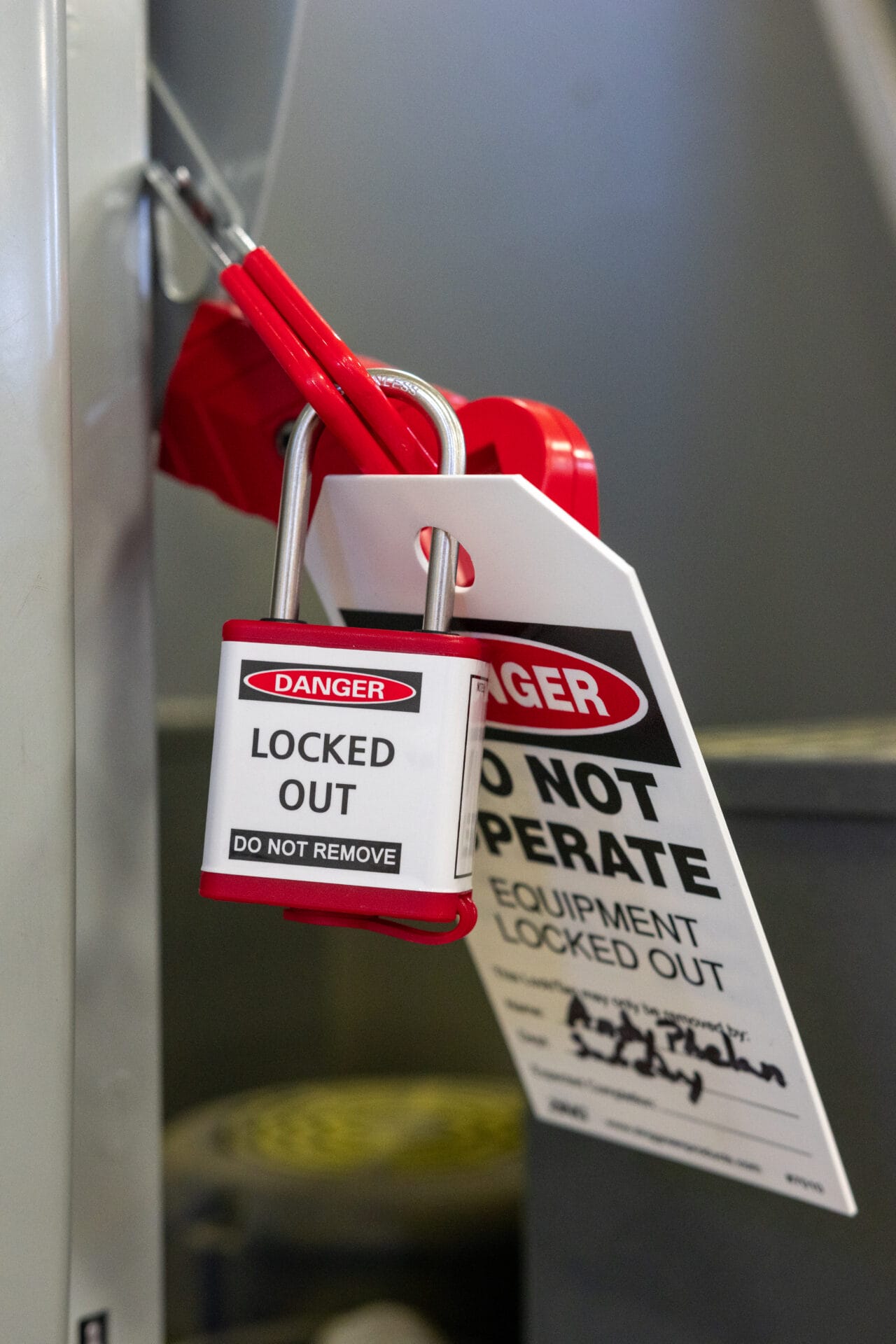This article covers 3 main tactics for creating a safe environment and preventing workplace injuries: training, removing barriers, and safety culture.
A startling statistic: An average of 15 Americans die DAILY from workplace injuries.
Don’t believe it? See the National Census of Fatal Occupational Injuries in 2022 report that the Bureau of Labor Statistics (BLE) released on December 19, 2023.
Sadly, this appalling death count wasn’t all that the report told about workplace safety in America. It also noted that fatal work injuries experienced a 5.7% increase over the year prior. Of particular note, “Fatalities due to contact with objects and equipment increased 4.7 percent from 705 fatalities in 2021 to 738 in 2022. This is the highest count for this event category since 2018. Machinery was the source of 199 fatalities within this category.” The report, though sad in its nature, provides key insights into the current state of workplace safety and highlights areas that are in need of particular attention, such as the need for more effort in preventing workplace injuries.
Most would agree that even one death is too many, so what can we do to prevent workplace injuries and deaths?
OSHA, Lockout Tagout, and Safety
Injury and death due to unintentional machine startup or exposure to hazardous energy is completely preventable. The Occupational Safety and Health Administration (OSHA) recognized this fact and published The Standard for Control of Hazardous Energy (Lockout/Tagout), 29 CFR 1910.147 in 1989.
This lockout tagout standard covers the servicing and maintenance of machines and equipment in which the unexpected energization or start up of the machines or equipment, or release of stored energy could cause injury to employees. For more information on OSHA 1910.147 see this article.
Lockout tagout itself is a systematic safety procedure designed to control hazardous energy sources during maintenance, repair, or servicing of machinery and equipment. It involves isolating energy sources, such as electrical, mechanical, hydraulic, or pneumatic, and securing them with locks and tags to prevent accidental activation.
The practice of lockout tagout and its oversight are meant to reduce the likelihood of workplace injuries occurring; however, it isn’t enough.
Despite OSHA’s efforts to create safer working conditions for workers nationwide, workers are still being injured and killed each year. Thankfully, there is hope. OSHA continues to do its part to enforce safety regulations, and now it is our turn to maintain that level of safety in our own organization(s).
In this article we will outline 3 specific tactics for cultivating a safer working environment and preventing workplace injuries.
These strategies are to focus on
- removing/minimizing barriers to proper LOTO procedures
- fostering a culture of safety
- and administering effective Lockout Tagout training
While these three strategies might not eliminate workplace accidents entirely, they represent a proactive approach to mitigating risk. After all, it is much easier to prevent these fatal, tragic accidents from occurring than to face the consequences of neglectful oversight. Intentionality and effort today just might save the life of a colleague or even yourself tomorrow.
Preventing Workplace Injuries by Removing Barriers
One of the best approaches to preventing workplace injuries is to minimize the possible factors that could hinder lockout tagout procedures from being correctly followed. By removing any obstacles, the process becomes much more do-able and effective for workers to accomplish. Below is a list of the most common impediments to error-free lockout tagout procedures.
Recommendation: Pull out something to write on and record any areas where your organization is lacking in safety. This is what we call a gap analysis. Doing a gap analysis of your company is similar to a doctor’s checkup in that it is an evaluation that documents where you are currently at. That information can then be used to make a plan for where you want to end up. A few questions you can ask yourself as you do a gap analysis are:
- Is your program and practices compliant?
- Do employees understand the program and their roles and responsibilities?
- Are the program requirements being applied correctly?
The article outlines solutions and action items that can be taken to resolve issues in preventing workplace injuries/fatalities, so taking notes about your areas of improvement will be the first step in making a change.
1. Lack of Awareness: Employees may not fully understand the importance of lockout tagout procedures or the potential risks associated with hazardous energy sources, leading to non-compliance and safety lapses. Particularly for individuals who are new to the industry or company, this may be a hazard to safety.
2. Complacency: Over time, employees may become complacent or take shortcuts when performing lockout tagout procedures, especially if they have not encountered any incidents in the past, increasing the risk of accidents.
3. Resistance to Change: Implementing new safety procedures, such as lockout tagout, may be met with resistance from employees who are accustomed to existing work practices or perceive changes as burdensome or unnecessary. Those who are unwilling to comply with safety measures put not only themselves in danger, but others as well.
4. Insufficient Training: Inadequate or ineffective lockout tagout training programs may result in employees lacking the necessary knowledge and skills to perform procedures correctly, increasing the likelihood of errors and accidents.
5. Resource Constraints: Limited resources, such as time, budget, or personnel, may hinder organizations’ ability to invest in safety training, equipment upgrades, or maintenance, compromising safety standards. Additional constraints can come through lack of equipment such as lockout tagout tags, devices, and locks.
6. Communication Barriers: Poor communication among employees, supervisors, and management can impede the dissemination of safety information, leading to misunderstandings, misinterpretations, and non-compliance with lockout tagout procedures.
Now that you understand what may be keeping your organization and its employees from successfully implementing LOTO procedures, let’s discuss the steps you can take to bypass those barriers. Removing these barriers is one of the best ways to more forward in preventing workplace injuries.
-
- Education and Training: Provide comprehensive and ongoing education and training programs to increase awareness of lockout tagout procedures, emphasize their importance, and ensure that employees have the knowledge and skills to execute them correctly.
-
- Leadership Commitment: Demonstrate visible leadership commitment to workplace safety by actively promoting and participating in safety initiatives, allocating resources for safety improvements, and holding all employees accountable for adhering to safety protocols.
-
- Employee Engagement: Involve employees in the development and implementation of lockout tagout procedures, seek their input on safety issues, and encourage them to take ownership of safety by reporting hazards and suggesting improvements. If workers feel they have “bought in” on safety measures, they will be much more likely to follow through on them.
-
- Regular Check-ins and Follow-ups: Regularly review and evaluate lockout tagout procedures, identify areas for improvement, and implement corrective actions to address safety deficiencies and prevent future incidents.
-
- Clear Communication: Establish clear communication channels for disseminating safety information, providing feedback, and addressing safety concerns promptly. Encourage open dialogue among employees and management to foster a culture of safety and collaboration.
-
- Investment in Resources: Allocate sufficient resources, including time, budget, and personnel, to support safety initiatives, such as training, equipment upgrades, and maintenance activities. Investing resources into lockout tagout procedures helps ensure that safety remains a priority for the organization.
By identifying and addressing barriers to workplace safety and lockout tagout procedures, organizations can create a safer work environment, reduce the risk of accidents and injuries, and foster an atmosphere that prioritizes the well-being of employees.
In the following sections we will do a deep-dive into 2 areas that can play a significant role in diminishing the presence or effect of the aforementioned barriers to safety: Training and Safety Culture. These 2 strategies, along with efforts to remove barriers to safety, are key to preventing workplace injuries.
Creating a Safety Culture to Prevent Workplace Injuries
As reported by OSHA, Lockout Tagout is one of the top 10 most frequently cited workplace safety standards, meaning that there is a lot of room for improvement in this area of workplace safety. The issue is, workplace safety isn’t a one man show. It requires the cooperation and buy-in from all participating parties.
Here’s how organizations can cultivate a safety culture, prevent workplace injuries/accidents, and promote safety:
Essential Elements for Creating a Safety Culture
1.Clearly Set Expectations: Help employees understand what is expected of them. They cannot comply if they do not know what the expectation is. Once they understand it, they can hold each other accountable to it. Additionally, encouragement and expressions of trust from leaders will motivate workers to take part in creating and maintaining a safety culture.
2. The Example of Leaders: Demonstrate visible leadership commitment to safety by actively participating in safety initiatives, supporting safety training programs, and allocating resources to improve workplace safety standards. Consider the message that is sent to subordinates when their managers make safety a priority and conversely the message sent if their managers and leaders disregard company policy.
3. Employee Autonomy and Involvement: Engage employees at all levels in safety-related decision-making processes, safety committees, and workplace inspections to foster a sense of ownership and accountability for safety outcomes. The more they feel that they are helping shape the procedures and culture, the more likely they will be to follow it themselves.
4. Positive Reinforcement: Recognize and reward employees for their contributions to safety, such as identifying hazards, implementing safety improvements, and adhering to lockout tagout procedures. However, beware of setting quotas or accidentally incentivizing employees to create hazards in order to report them.
5. Kaizen/Continuous Improvement: “Kaizen” is a Japanese term that refers to continuously improving, particularly in a business setting. It is the idea that all improvements, no matter how small, are impactful in the overall functions of the company. Having “Kaizen” as a priority in the workplace will naturally result in greater intentionality regarding workplace safety. This idea can be promoted by regularly evaluating safety performance, conducting incident investigations, and implementing corrective actions to prevent recurrence of safety incidents.
6. Transparent Communication: Establish open and transparent communication channels that prioritize safety discussions and encourage employees to voice concerns, report hazards, and share ideas for improvement.
How To Lead By Example
1.Adherence to Procedures: Leaders should consistently adhere to lockout tagout procedures themselves and ensure that all employees follow established safety protocols without exception. This reinforces the importance of compliance and sets a positive example for others to follow.
2. Safety Training: Leaders should actively participate in lockout tagout training sessions alongside other employees to demonstrate their commitment to safety and reinforce the importance of ongoing learning and development.
3. Safety Equipment Usage: Leaders should consistently wear personal protective equipment (PPE) and utilize safety devices, such as locks and tags, when performing maintenance or servicing tasks, emphasizing the importance of proper safety practices.
4. Safety Observations: Leaders should conduct regular safety observations and audits to identify potential hazards, provide feedback to employees, and ensure compliance with safety procedures. This proactive approach demonstrates a commitment to identifying and addressing safety risks proactively.
5. Open Dialogue: Leaders should maintain an open-door policy for safety concerns, actively listen to employee feedback, and take prompt action to address safety issues raised by employees. This fosters trust and demonstrates that safety is a top priority for the organization.
Preventing Workplace Injuries with Proper Training
Lockout Tagout Training: Empowering Employees with Essential Safety Knowledge
Effective lockout tagout (LOTO) training is a cornerstone of workplace safety in industrial settings. It equips employees with the knowledge and skills necessary to identify and control hazardous energy sources, ultimately reducing the risk of workplace injuries and fatalities. Here’s how organizations can use lockout tagout training to inform and empower their employees:
OSHA Regulation: 1910.147(c)(7)(i) The employer shall provide training to ensure that the purpose and function of the energy control program are understood by employees and that the knowledge and skills required for the safe application, usage, and removal of the energy controls are acquired by employees.
What Proper Training Should Include
1.Comprehensive Training Programs:
Develop comprehensive lockout tagout training programs that cover all aspects of the procedure, including:
- Understanding Hazardous Energy: Educate employees about the various types of hazardous energy sources present in the workplace, such as electrical, mechanical, hydraulic, or pneumatic energy. A full inventory of your workplace’s machinery/equipment requiring LOTO procedures should be compiled and shared with employees, particularly those in close contact with those items.
- Lockout Tagout Procedures: Provide step-by-step instructions (tailored specifically to your company circumstances) on how to properly lock out and tag out equipment, including the identification of energy isolation points, the application of locks and tags, and the verification of de-energization. Whether written or digital, employees need access to company LOTO procedures at all times.
- Equipment-Specific Protocols: Tailor training to the specific equipment and machinery used in the workplace, ensuring that employees understand the unique lockout tagout requirements for each piece of equipment.
- Safety Precautions: Emphasize the importance of following safety precautions, such as wearing appropriate personal protective equipment (PPE) and adhering to established procedures to prevent accidents and injuries.
2. Hands-On Demonstrations and Simulations:
Conduct hands-on demonstrations and simulations to reinforce theoretical knowledge with practical experience. Note that it is very important to have trainers who are competent doing the demonstrations, so as to avoid faulty procedures. Allow employees to practice applying lockout tagout procedures on actual equipment under the guidance of experienced trainers. This hands-on approach helps employees develop confidence and proficiency in executing LOTO procedures correctly.
3. Interactive Learning Materials:
Utilize interactive learning materials, such as videos, presentations, and online modules, to engage employees and enhance their understanding of lockout tagout concepts. Incorporate real-life case studies, scenarios, and quizzes to reinforce key concepts and promote active participation.
4. Role-Playing Exercises:
Organize role-playing exercises where employees assume different roles, such as equipment operators, maintenance personnel, and safety inspectors, to simulate lockout tagout scenarios. This allows employees to practice communication, coordination, and decision-making skills in a controlled environment, preparing them to respond effectively to real-world situations.
5. Continuous Training and Refresher Courses:
Provide ongoing training and refresher courses to ensure that employees stay updated on lockout tagout procedures and best practices. Schedule regular training sessions, especially for new hires and employees assigned to new roles or responsibilities involving equipment maintenance or servicing. It is expected that LOTO procedures be inspected and reviewed at least once a year. However semi-annual or quarterly reviews may increase performance.
6. Clear Communication and Documentation:
Emphasize the importance of clear communication and documentation throughout the lockout tagout process. Train employees to communicate effectively with coworkers, supervisors, and contractors regarding equipment status, lockout tagout procedures, and potential hazards. Encourage thorough documentation of lockout tagout activities, including equipment isolation, lock placement, and verification procedures.
While implementing all of these aspects is ideal, it may take time to fine-tune lockout tagout procedures at your company. In fact, safety should be a pursuit that is ever-improving! That being said, it is most important to start somewhere.
For those feeling overwhelmed, start with the goal of improving 1% and go from there. Even the implementation of a single suggestion in this training section may lead to notable changes in workplace safety at your location.
Conclusion
Lockout tagout plays a critical role in establishing and maintaining workplace safety. Three strategies for creating a safe environment and preventing workplace injuries include providing effective training, removing barriers, and cultivating a safety culture. While each of these tactics can take time and effort to implement, they are worthwhile endeavors for safeguarding lives.







